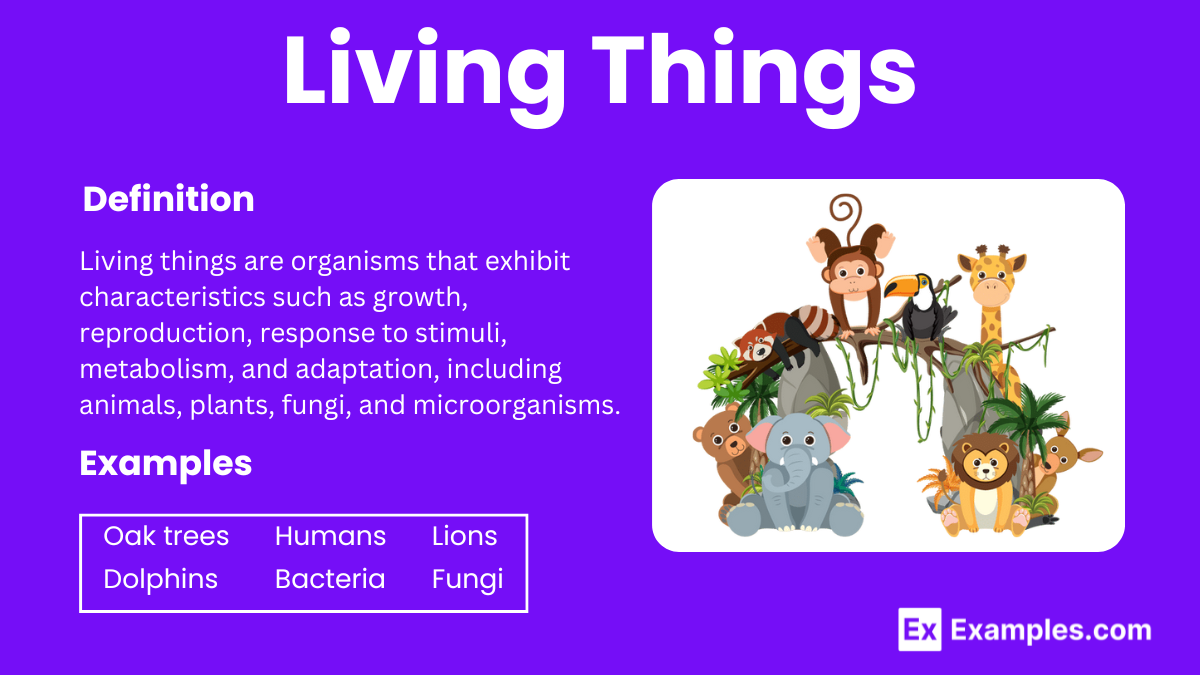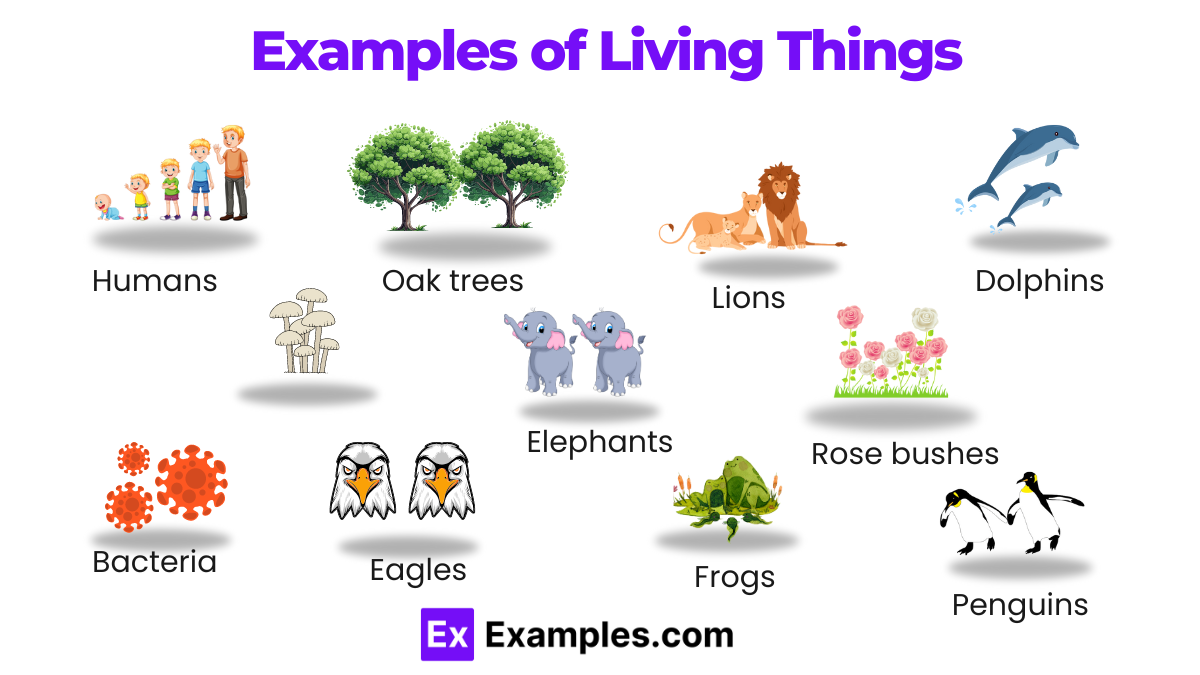What characteristic is essential for classifying an entity as a living organism?
Ability to move
Presence of complex tissues
Ability to reproduce
Presence of a backbone


Living things, also known as organisms, encompass a vast diversity of life forms, including flora (plants) and fauna (animals). These organisms exhibit essential characteristics such as growth, reproduction, response to stimuli, and metabolism. Fauna, which refers to the animal life in a specific region, plays a crucial role in maintaining ecological balance. Understanding the various forms of life helps us appreciate the complexity and interdependence of all living organisms within ecosystems.
Living things, or organisms, are entities that exhibit life processes such as growth, reproduction, response to stimuli, and metabolism. They include flora (plants) and fauna (animals), all contributing to the complex web of life within ecosystems.

1. Domain: The highest rank, includes Archaea, Bacteria, and Eukarya.
2. Kingdom: Subdivides domains; includes Animalia, Plantae, Fungi, Protista, Archaea, and Bacteria.
3. Phylum: Groups organisms based on general body plan and organization.
4. Class: Divides phyla; e.g., Mammalia in the Chordata phylum.
5. Order: Groups classes; e.g., Primates in the Mammalia class.
6. Family: Divides orders; e.g., Hominidae in the Primates order.
7. Genus: Groups species with common characteristics; e.g., Homo.
8. Species: The most specific rank, identifies individual organisms; e.g., Homo sapiens.
| Aspect | Living Things | Non-Living Things |
|---|---|---|
| Growth | Grow by increasing in size and number of cells | Do not grow; remain the same size |
| Reproduction | Reproduce to produce offspring | Cannot reproduce |
| Response to Stimuli | React to environmental changes | Do not respond to environmental changes |
| Metabolism | Carry out metabolic processes to obtain and use energy | Do not have metabolic processes |
| Homeostasis | Maintain internal balance despite external changes | No internal regulatory mechanisms |
| Cellular Organization | Composed of one or more cells | Not composed of cells |
| Adaptation | Evolve and adapt to their environment over generations | Do not adapt; remain unchanged |
| Movement | Many can move autonomously | Do not move on their own; any movement is due to external forces |
Living things can grow, reproduce, and respond to stimuli, while non-living things cannot.
Growth, reproduction, response to stimuli, metabolism, homeostasis, cellular organization, adaptation, and respiration.
The chemical processes that occur within a living organism to maintain life.
The ability to maintain internal stability despite external changes.
Through sexual or asexual means to produce offspring.
They produce energy through photosynthesis, forming the base of the food chain.
Herbivores that eat producers to obtain energy.
Organisms like bacteria and fungi that break down dead matter, recycling nutrients.
The arrangement of cells that form the basic structure of living organisms.
It allows organisms to survive and thrive in changing environments.
Text prompt
Add Tone
10 Examples of Public speaking
20 Examples of Gas lighting
What characteristic is essential for classifying an entity as a living organism?
Ability to move
Presence of complex tissues
Ability to reproduce
Presence of a backbone
Which of the following is NOT a characteristic of all living things?
Growth and development
Ability to respond to stimuli
Ability to perform photosynthesis
Cellular organization
How do living organisms maintain internal stability?
Through osmosis
Through homeostasis
Through photosynthesis
Through respiration
Which of the following is an example of a unicellular organism?
A human
A cat
An amoeba
A fern
What is the primary function of cellular respiration in living organisms?
To convert light energy into chemical energy
To produce oxygen as a byproduct
To break down glucose and release energy
To create new cells
What do we call the process by which living organisms convert energy from the sun into chemical energy?
Respiration
Photosynthesis
Fermentation
Digestion
Which of the following levels of biological organization is the smallest?
Tissue
Orga
Cell
Organism
What is the main purpose of the genetic material (DNA) in living organisms?
To provide energy for cellular activities
To encode information for protein synthesis
To transport nutrients throughout the organism
To regulate the body’s temperature
Which process involves the breakdown of complex molecules into simpler ones, often releasing energy?
Photosynthesis
Anabolism
Catabolism
Replication
Which term describes the interaction of living organisms with their environment?
Homeostasis
Metabolism
Ecology
Evolution
Before you leave, take our quick quiz to enhance your learning!

